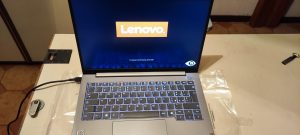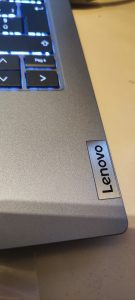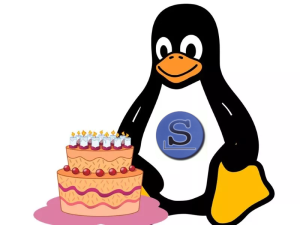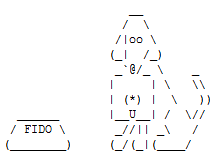A few days ago, after much thought, waiting and reflection, I ordered and received a new laptop to replace the Dell XPS 13 9350 that I have been using since 2016.
It is a Lenovo Thinkbook 14 Gen 7 IML, Intel Core Ultra 7 155H processor, 32GB RAM, 1TB nvme disk.

The laptop is a second computer for me, as I use the fixed desktop workstation I have at home most of the time. On weekends and during vacations or other occasions when I am away from the workstation, I use the laptop instead, which in my beach house turns into a fixed workstation with an external monitor, keyboard and USB mouse.
On the laptop I obviously have an instance of Slackware Linux, and I transfer it from one laptop to another without installing from scratch. In this case I prepared a USB stick with an iso of LiveSlak using Rufus. I started the notebook from USB with the Secure Boot option disabled and proceeded to partition the disk.

I then connected the new laptop to the old one via network cable and proceeded to rsync the old laptop’s partitions onto the new one.
The most entertaining part is setting up the UEFI boot. Once I copied the distribution and chrooted to it, I first proceeded to enroll the pre-existing signing keys for secure boot. A very simple and versatile tool to use for this and for managing secure boot in general is sbctl. After this step, I added my bootloader to the boot menu using efibootmgr, setting it as the primary boot. All I had to do was reboot, re-enable secure boot in the bios, and everything went as expected.
The peripherals and new features were all supported by Slackware without any difficulty and the performance was significantly increased compared to the previous laptop that was more than 8 years old.
A satisfying result in a short time!

 My mail server was installed in 2007 and has always been a 32-bit system. It was originally a physical machine, a Pentium-based assembled unit. In 2010 I virtualized it with a p2v (physical to virtual) operation performed via rsync.
My mail server was installed in 2007 and has always been a 32-bit system. It was originally a physical machine, a Pentium-based assembled unit. In 2010 I virtualized it with a p2v (physical to virtual) operation performed via rsync. On January 1, 2024,
On January 1, 2024, 
 Giorgio Rutigliano has recently made available
Giorgio Rutigliano has recently made available 


